Table of Contents
Types of Nuclear Reactor Power Plants
There are many concepts for nuclear reactors, however, in this article, we will discuss a few of the following types of power plants that have been developed commercially.
- Pressurized Water Reactor (PWR)
- Boiled Water Reactor (BWR)
- CANDU Reactor
- Gas Cooled Reactor (GCR)
- Sodium Graphite Reactor (SGR)
- Fast Breeder Reactor (FBR)
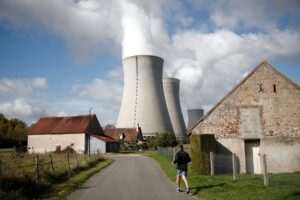
Pressurized Water Reactor (PWR) Power Plant
Pressurized Water Reactor uses water or heavy water as both the coolant as well as moderator. It uses enriched uranium as fuel. Water in the reactor absorbs the heat generated and converts it into steam. This steam generated is used for the thermal power plants to drive its turbine and produce energy.
Advantages of PWR
- Water is used as both coolant and moderator.
- Reactor is compact
- Fewer control rods are required.
Disadvantages of PWR
- Capital cost is high
- Costly shielding is required.
For more details see – Pressurized Water Reactor (PWR) Power Plant
Boiled Water Reactor (BWR) Power Plant
A Boiled water reactor uses water as both coolant as well as moderator. It uses enriched uranium as fuel. In this reactor, water is directly converted into saturated steam. This steam is supplied to the steam turbine in a conventional power plant and electrical energy is produced.
Advantages of BWR
- The system is simple and cheap.
- The efficiency of the system is high.
- It’s a low-pressure reactor hence reducing the cost of the power plant.
Disadvantages of BWR
- It can’t meet sudden changes in load on the plant.
-
It has the possibility of radioactive contamination of the steam turbine.
-
The system requires extensive safety devices against radioactive radiation which are costly.
For more details see – Boiled Water Reactor (BWR) Power Plant
CANDU Reactor Power Plant
CANDU stands for Canadian Deuterium Uranium reactor.
It uses pressurized heavy water as moderator and primary coolant. The fuel used is natural uranium.
Advantages of CANDU reactor
- Less costly.
- Enriched fuel is not required.
- Heavy water is used as a moderator that has low fuel consumption.
- It has a good breeding ratio.
Disadvantages of CANDU reactor
- CANDU reactor has critical temperature limitations.
- Heavy water used as a moderator is costly.
- Leakage problems may occur.
- Large plant size.
For more details see – CANDU Reactor Power Plant
Gas Cooled Reactors (GCR) Power Plant
These type of reactors uses gas as coolant and graphite as moderator.
The advantage of using gas as coolant is that it is safe, easy to handle and it can be heated up to any temperature without change of phase at any pressure.
Advantages of GCR
- Gases are easy to handle.
- Gases can be pressurized easily.
- No corrosion problems.
- Graphite remains stable at higher temperatures.
Disadvantages of GCR
- Fuel needs to be operated at higher temperatures.
- A large amount of fuel loading is required.
- More power is needed for coolant circulation.
For more details see – Gas Cooled Reactor (GCR) Power Plants
Sodium Graphite Reactor (SGR) Power Plant
This power plant uses graphite as a moderator and sodium as a coolant.
Here, sodium is used as a primary coolant and sodium potassium (NaK) is used as a secondary coolant.
Advantages of SGR
- The high temperature of steam can be obtained.
- The system doesn’t need to be pressurized.
- Thermal efficiency is high.
Disadvantages of SGR
- Any leakage of sodium is highly contagious.
- Sodium is highly violent with air and water.
- Primary and secondary heat exchangers are needed to be shielded with concrete blocks against radiations.
For more details see – Sodium Graphite Reactor (SGR) Power Plant
Fast Breeder Reactor (FBR) Power Plant
In this reactor, a moderator is not used. The primary fuel U-235 is surrounded by a blanket of fertile material.
Fertile material like U-238 is kept there. Here, fast-speed electrons are absorbed by U-238 which produces Pu-239.
Advantages of FBR
- The absorption of the neutron is slow.
- Moderator is not required.
- A small core is sufficient since it gives high power density as compared to other reactors.
Disadvantages of FBR
- The neutron flux is high at the center of the core.
- It requires enriched uranium as fuel.
For more details see – Fast Breeder Reactor (FBR) Power Plant
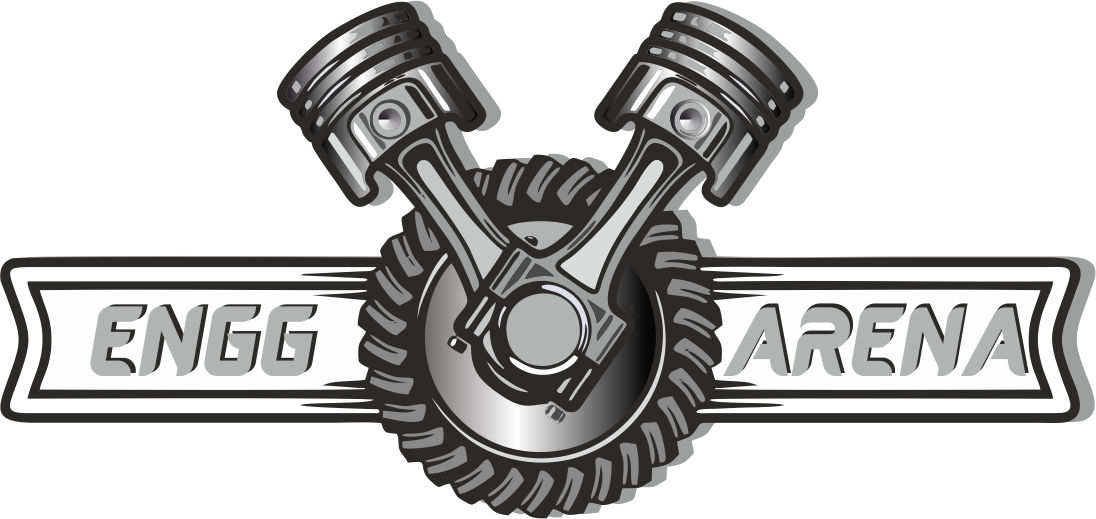
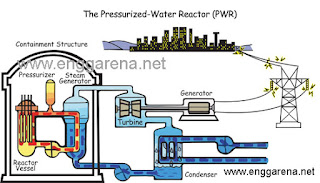
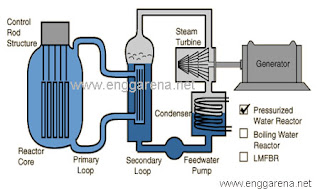
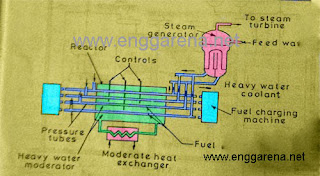
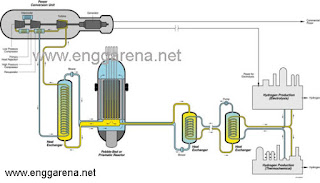
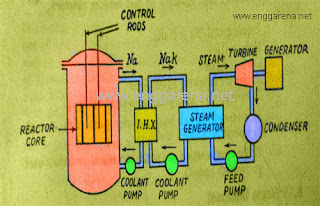
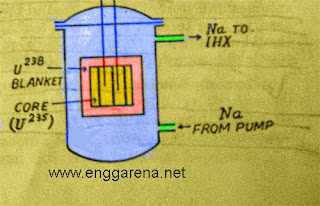
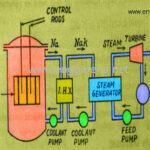
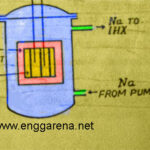
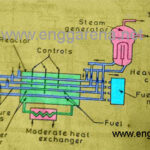
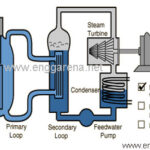
2 thoughts on “5 Types of Nuclear Reactor Power Plants”